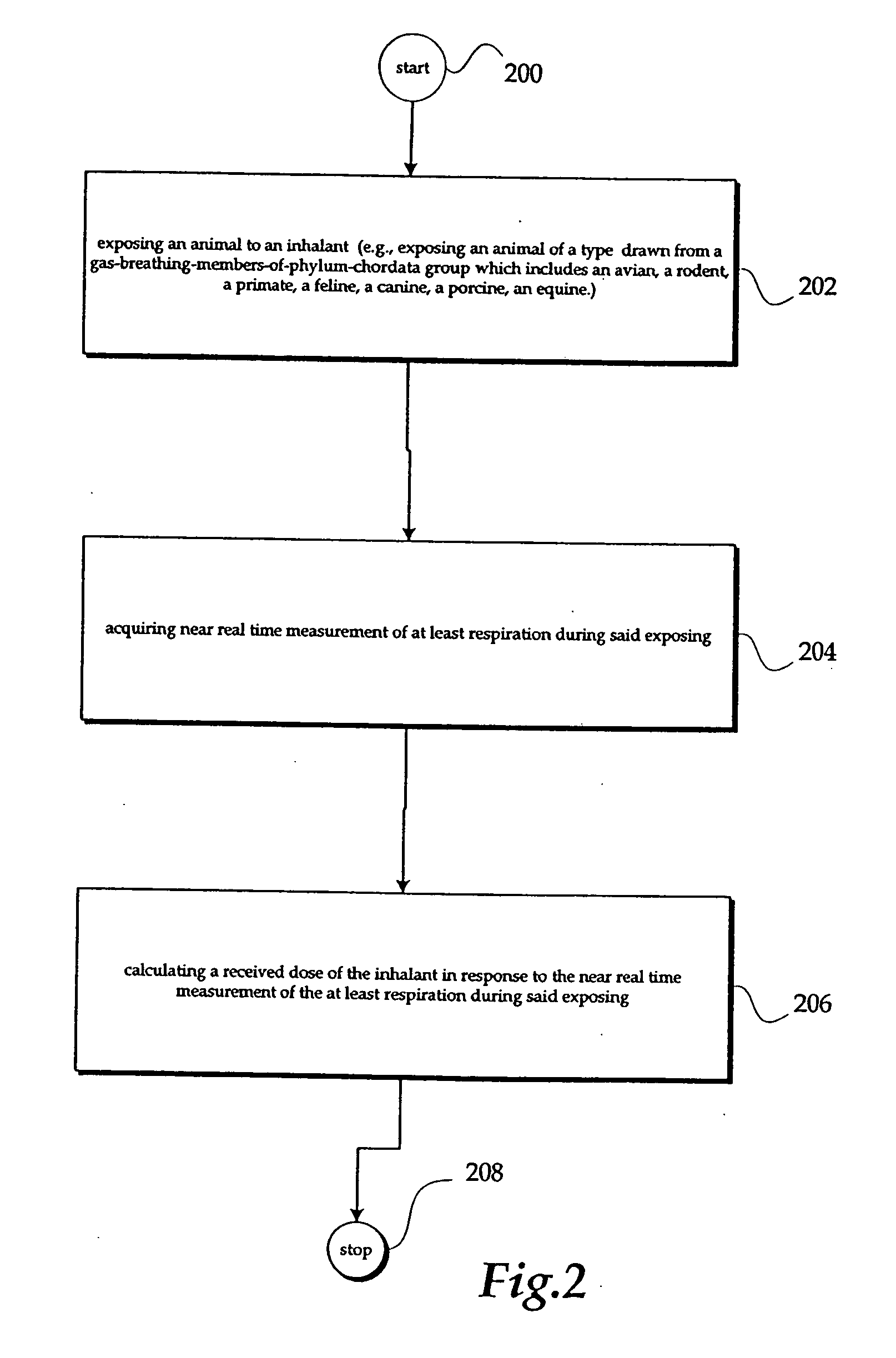Automated inhalation toxicology exposure system and method
a toxicology and automatic inhalation technology, applied in the field of inhalant systems, can solve the problems of poor reproducibility of scientific experiments, poor control and/or monitoring of related-art inhalant systems, and poor control of inhalant delivery,
- Summary
- Abstract
- Description
- Claims
- Application Information
AI Technical Summary
Benefits of technology
Problems solved by technology
Method used
Image
Examples
Embodiment Construction
[0035] With reference now to FIG. 1, shown is a high level pictographic representation of inhalant exposure and monitoring system 100. Depicted is inhalant toxicology exposure system 100. Illustrated is animal 102 contained within inhalant chamber 104. Shown integral with inhalant chamber 104 is sensor 106, which is intended to be indicative of one or more types of sensors integral with various parts of inhalant toxicology exposure system 100. For example, sensor 106 is meant to be indicative of a variety of different types of sensors, such as temperature sensors, humidity sensors, particle count sensors, gas concentration sensors, etcetera, and even though sensor 106 is shown integral with inhalant chamber 104, sensor 106 is meant to be indicative of sensors positioned throughout various parts of inhalant toxicology exposure system 100.
[0036] Further with respect to FIG. 1, depicted is input airflow driver 108 (e.g., an air pump) connected to drive air through input air hose 110 a...
PUM
 Login to View More
Login to View More Abstract
Description
Claims
Application Information
 Login to View More
Login to View More - R&D
- Intellectual Property
- Life Sciences
- Materials
- Tech Scout
- Unparalleled Data Quality
- Higher Quality Content
- 60% Fewer Hallucinations
Browse by: Latest US Patents, China's latest patents, Technical Efficacy Thesaurus, Application Domain, Technology Topic, Popular Technical Reports.
© 2025 PatSnap. All rights reserved.Legal|Privacy policy|Modern Slavery Act Transparency Statement|Sitemap|About US| Contact US: help@patsnap.com



